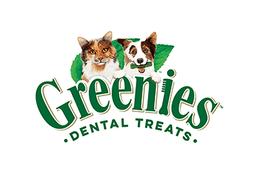Irish Wolfhound

The Irish Wolfhound, often called a "gentle giant," is known for its calm and friendly nature. Despite their impressive size, they are excellent family pets, friendly towards children, strangers, and other animals.
This ancient breed dates back to around 7000 BC in Ireland, with the oldest written record from Rome in 391 AD. Initially bred for hunting wolves and giant Irish elk, they were highly valued by the nobility. However, the extinction of wolves in Ireland and gifting practices to foreign nobles led to their decline by the 18th century. The Irish famine further decimated their numbers in the 19th century.
Restoration efforts began in the 1860s by infusing bloodlines from Scottish Deerhounds, Great Danes, Borzois, and Tibetan Wolfdogs. The Irish Kennel Club adopted the first breed standard in 1885.
As the tallest dog breed, males can stand up to 89 cm (35 inches) and weigh up to 81.6 kg (180 pounds), while females are slightly smaller. They possess a distinctive rough, wiry coat, contributing to their rugged appearance.
Irish Wolfhound Breed Facts & Characteristics
| Characteristic | Detail |
|---|---|
| Origin | Ireland |
| Also known as | Irish Wolfhound, Cu Faoil, Big Dog of Ireland, Greyhound of Ireland, Great Hound of Ireland, Wolfdog of Ireland |
| Size | Giant: 71 to 86 cm height; 40.5 to 54.5 kgs minimum weight |
| Weight range | 40.5 to 54.5 kgs |
| Colours | Red, brindle, black, fawn, gray, white |
| Life expectancy | 6 to 8 years |
| Coat | Wiry, rough coat, low shedding |
| Temperament | Patient, easy going |
| Activity levels | Moderately active |
| Best suited for | Active households, with space for a large dog |
| Apartment friendly | Better suited to larger properties |
Personality
The Irish Wolfhound is renowned for its calm and gentle demeanour. These dogs are exceptionally patient, making them ideal companions for families with children. They possess a friendly and sociable nature, welcoming strangers and getting along well with other pets.
Loyalty and devotion are hallmarks of the Irish Wolfhound's character. They form strong bonds with their owners and thrive on close companionship. Their intelligence and eagerness to please contribute to their trainability, responding best to gentle and consistent training methods.
Despite their size, Irish Wolfhounds are not particularly energetic and are content with a relaxed lifestyle. Their affectionate nature and serene temperament make them a beloved member of any family.
Grooming
With a wiry rough coat of the Irish Wolfhound has a soft undercoat. It is fairly low maintenance but will benefit from weekly or more frequently brushing with an undercoat rake and a pin brush. Excessively long hair around the genitals, toes and eyes may need trimming every now and again. Flea control all year around is recommend as is tick control if in a tick area.
Feeding
When choosing a food for your Irish Wolfhound, select a premium large breed dog food appropriate to your dog’s life stage. Follow the recommended feeding guides on the food appropriate to your pet's size. Make sure your dog always has a supply of fresh, clean water available.
Common Health Concerns
Irish Wolfhounds are generally healthy dogs, but they are prone to certain health issues due to their size and genetics. Common concerns include hip dysplasia, heart problems such as dilated cardiomyopathy, and bone cancer. They may also suffer from bloat, a potentially life-threatening condition.
Did you know?
Irish Wolfhounds were so highly valued in ancient times that they were often gifted to kings and nobility? These majestic dogs were considered symbols of status and power, and their presence in royal courts across Europe was a mark of prestige.




























